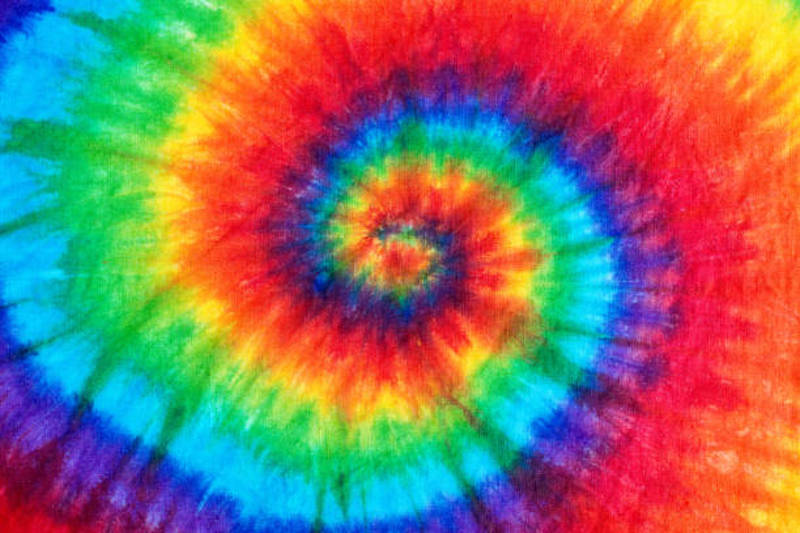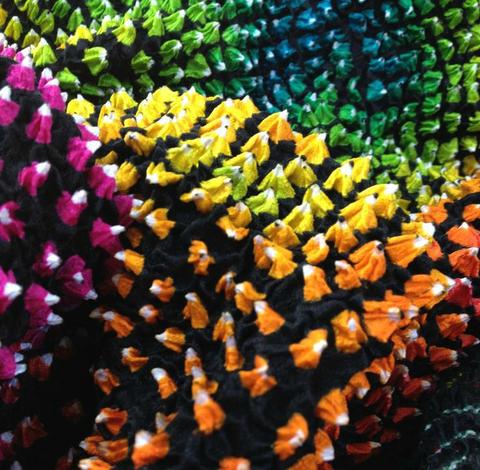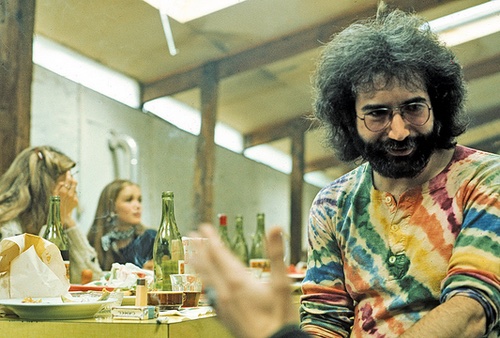The History of Tie-Dye

When most people today see a tie-dye shirt, they are reminded of the hippie movement of the 1960s and 70s in the United States, and it would be easy to assume that the history of tie-dye begins with them.
While it’s true that the bright colored shirts commonly seen at at Grateful Dead concerts and festivals like Woodstock were wildly popular in America during that time, the practice of tie-dying garments and another fabrics was by no means invented by the hippies.
In fact, the earliest records of humans using a technique similar to modern tie-dyers dates way back to the 5th century, with archeological findings of tie-dye garments along Far East trade routes between China, Egypt, and Turkistan.
However, the practice also occurred under different names in many different cultures, meaning that it does not have one specific place of origin.
For that reason it can be assumed that the earliest examples of tie-dye garments could have been mistakes resulting from unmixed dye or other oversights. Apparently the mistakes were enjoyed enough to be done on purpose in the future, straight across the board.
In Japan, the process that Americans know as tie-dying is known as shibori, and in India it’s known as bandhani or leheriya.
Indonesians know it as plangi or tritik, and Nigerians as adire. Peruvians call it amarra, and the Chinese, they call it zha ran.
The process of tie-dye involves some form of tying a textile in a twisted or otherwise mangled fashion and then applying one or several different colors of dye to the fabric to produce patterns of color.
Each culture has developed different nuances to their respective styles, but the process itself is similar in all cases.

For example, the popular Japanese shibori was developed as early as 552 CE as one of the earliest indigo dye techniques.
Rather than the American flower power swirls and such, the shibori tie-dye technique features a more intricate folding pattern done with only indigo blue dye, and is still popular today among modern tie-dye artists both in the United States and Japan.
Learn how to do your own shibori tie-dye here.
The Indian bandhani tie-dye technique is even older than Japanese shibori, and perhaps the oldest of all tie and dye methods still used today, dating back as far as 4000 BCE. Bandhani is done by plucking certain threads from a fabric and tying them up in sections to be dyed.
In the Indian culture, the different colors used have symbolic and religious meanings, such as the color yellow representing joy and springtime.

In American culture, the earliest records of tie-dye techniques being practiced bring us not to the 1960s, not yet, but rather the year 1909, when Columbia University professor Charles E. Pellow came across some tie-dyed textiles and gave his students a lecture on the technique that included a demonstration of the process.
However the technique was first used somewhat widely among the American public in the 1920s, better known in history books as the “Roaring Twenties”, which is the first time common folks in America decided they wanted to get a little wild, and began dying fabrics and decor to liven up their living spaces (and dancing The Charleston).
The popular dye company Rit was started in 1918, and still reigns supreme today as the dye company of choice when tie-dying fabrics.
Tie-dying remained popular through the Great Depression as it remained an easy and more importantly, cheap way to decorate a living space and it allowed for the repurposing of old fabrics that would have otherwise been laid to waste.
After the United States came out of the Great Depression the popularity of tie-dye dwindled for a while until the psychedelic rumblings started to happen down in San Francisco in the 1960s.
Ken Kesey, Jerry Garcia and the Grateful Dead were down there stirring the pot, taking LSD and wearing tie-dye shirts and starting a revolution.
As the word got out about the psychedelic movement more and more people began wearing tie-dye as a way to express creativity and freedom, with the bright colors standing out and allowing for self-expression in the free kind of way.

Soon this movement snowballed into something massive that would make history forever and today the tie-dye colors have become symbolic of the 1960s and 70s, with an almost nostalgic feel to them.
Now, tie-dye has once again become more popular than ever, with a sort of newfound psychedelic appreciation takin over the youth of America.
Even the team here at Extra Chill have embraced tie-dye as somewhat of a lifestyle, and in 2021 we gave our site and logo a makeover to let our freak flag fly just a bit.
Check out the tie-dye Extra Chill stickers we made below, and send us an email if you want one (fo’ free!). All we ask is that you slap it up somewhere and spread the word!
